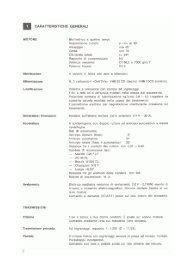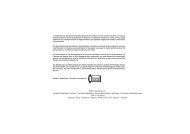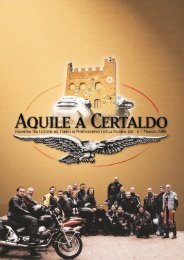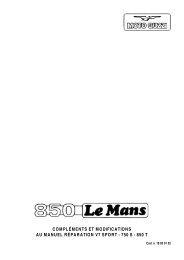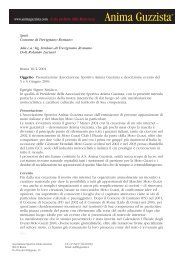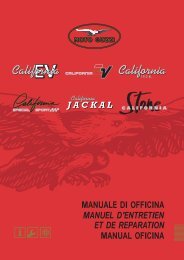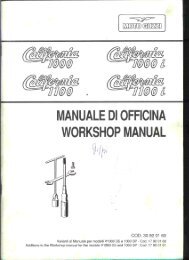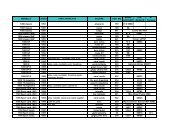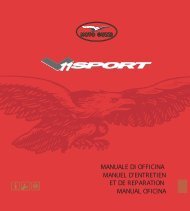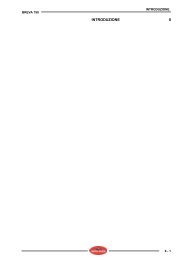You also want an ePaper? Increase the reach of your titles
YUMPU automatically turns print PDFs into web optimized ePapers that Google loves.
58 Controllo livello fluido nei serbatoipompe<br />
(fig. 15)<br />
Per una buona efficienza dei freni osservare le seguenti<br />
norme:<br />
1 Verificare frequentemente il livello del fluido nel<br />
serbatoio anteriore «A» e posteriore «B». Tale livello<br />
non deve mai scendere sotto il segno di minimo indicato<br />
sui serbatoi.<br />
2 Effettuare periodicamente, o quando si rende necessario,<br />
il rabbocco fluido nei serbatoi sopra citati.<br />
Per i rabbocchi usare tassativamente fluido<br />
prelevato da lattine sigillate da aprire solo al<br />
momento dell’uso.<br />
3 Effettuare ogni 20.000 km circa o al massimo ogni<br />
anno la completa sostituzione del fluido dagli impianti<br />
frenanti.<br />
Per il buon funzionamento degli impianti, è necessario<br />
che le tubazioni siano sempre piene di fluido con esclusione<br />
di bolle d’aria; la corsa lunga ed elastica delle leve<br />
di comando indica la presenza di bolle d’aria.<br />
Nel caso di lavaggio di circuiti frenanti, usare unicamente<br />
del liquido fresco.<br />
È vietato assolutamente l’uso di alcool o l’impiego<br />
di aria compressa per la successiva<br />
asciugatura; per le parti metalliche si consiglia l’uso<br />
di «Trielina».<br />
Per eventuali lubrificazioni è assolutamente vietato<br />
l’impiego di olii o grassi minerali. Non disponendo di<br />
lubrificanti adatti, si consiglia di umettare i particolari in<br />
Checking the brake fluid in the master<br />
cylinder reservoir (fig. 15)<br />
To ensure efficient operation of the brakes:<br />
1 Make frequent checks of the fluid level in the front<br />
«A» and rear «B» reservoirs.<br />
The level should always be above the minimum mark on<br />
the reservoirs.<br />
2 Top up the brake fluid when necessary or at regular<br />
intervals. Only use recommended brake fluid in sealed<br />
containers for topping up.<br />
Fluid containers should only be unsealed<br />
immediately before they are about to be<br />
used.<br />
3 The fluid in the brake reservoirs should be changed<br />
completely after about every 20,000 km, or at least once<br />
a year.<br />
To ensure efficient braking there should be no air<br />
bubbles in the brake circuit; if the brake lever has too<br />
much travel or a spongy action, this means that there are<br />
bubbles in the brake circuit.<br />
When flushing the Brake circuits, only use fresh brake<br />
fluid.<br />
Never use alcohol for flushing or compressed<br />
air for drying; we recommend the use of<br />
«trichloroethylene» for metal parts.<br />
Never use mineral oils or greases for lubricating<br />
parts. If no suitable lubricant is available, we recommend<br />
the light greasing of the rubber and metal parts<br />
with brake fluid.




